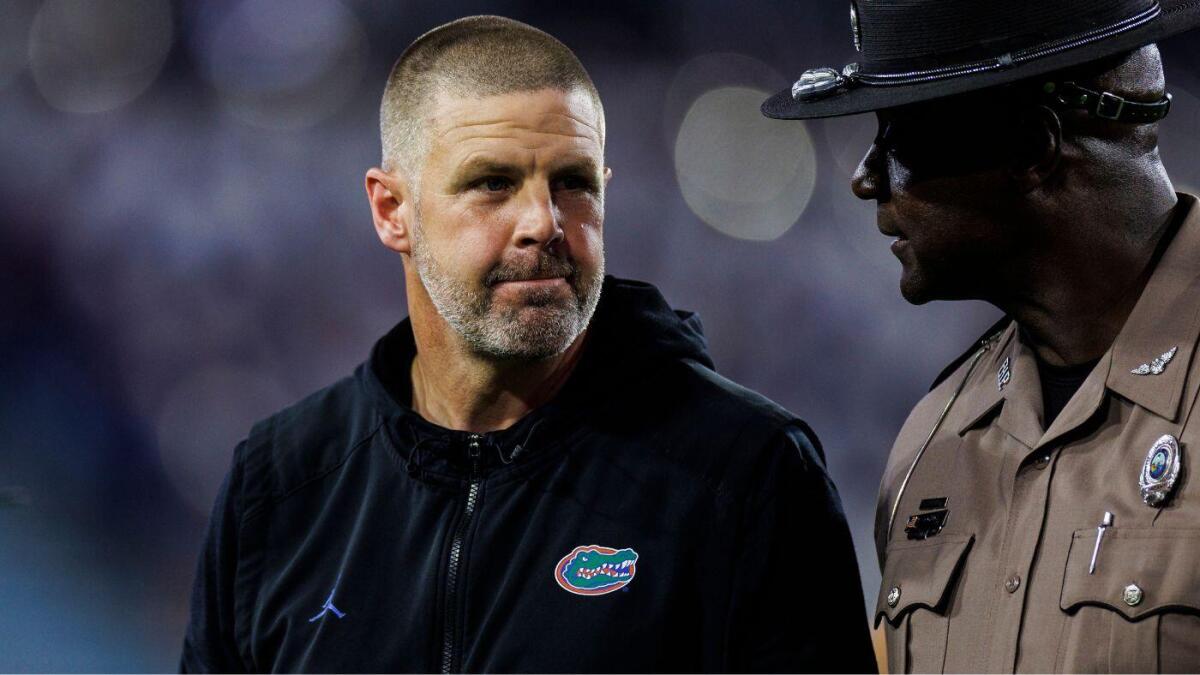Florida Football Recruiting: Navigating the 2025 and 2026 Classes with Ambition and Complexity
===========================================================================================
Recruitment in college football lives at the heart of a program’s potential to rise or fall on the national stage. The Florida Gators, a team with a rich and storied tradition, find themselves in the thick of intense recruitment activity for their 2025 and 2026 classes. Led by head coach Billy Napier, the Gators are aggressively shaping their roster with promising talent and strategic flips, although challenges remain as they vie for dominance in the fiercely competitive Southeastern region.
Recruitment Momentum and Landscape Updates
—————————————–
Recruiting momentum is crucial for building team depth and long-term success. Florida’s efforts in the early stages of both the 2025 and 2026 classes highlight a program with renewed vigor. The 2025 class recently welcomed three new commitments, indicating proactive groundwork toward shoring up near-term roster needs.
More strikingly, the 2026 class has expanded substantially, growing threefold in commitments with a robust infusion of highly-ranked prospects. These gains underscore Florida’s intensified recruiting presence and evolving strategy to secure top-tier talent ahead of time.
Key Commitments and Strategic Additions in the 2026 Cycle
———————————————————
Florida’s 2026 recruiting class reflects a well-rounded approach, blending defensive strength with offensive versatility. Securing multiple four-star prospects, such as defensive backs and offensive weapons, signals an ambition to not only fill positional needs but also add game-changing talent.
– Kaiden Hall, a four-star safety from Milton High, stands out as a significant local acquisition following an impactful campus visit. His pledge strengthens Florida’s homegrown talent pipeline.
– Will Griffin, a four-star quarterback recruit, offers valuable depth and potential competition for the signal-calling role, an essential position for offensive success.
– Izayia Williams, a four-star linebacker, bolsters the defensive front, complementing the secondary and enhancing tackling strength.
Additionally, recruits like running back Carsyn Baker and wide receiver Marquez Daniel address offensive skill positions, balancing the class and preparing Florida for dynamic playmaking.
Battles and Flips: Navigating the Competitive Recruiting Arena
————————————————————–
Recruiting in the Southeastern Conference is an arena of fierce competition, where battle lines are drawn over top prospects. Florida’s experience exemplifies this dynamic:
– Losing Fitzpatrick, a top-ranked safety who committed to Georgia, highlights the stiff SEC rivalry and the constant risk of losing elite recruits to peer programs.
– Successfully flipping cornerback Konanbanny from another program reveals Florida’s ability to strike back and secure valuable talent through persistent recruiting efforts.
– The flip of Ty Jackson to Florida after initial commitments elsewhere further illustrates proactive and effective recruitment.
At the same time, the Gators face pressure to retain commitments, as seen in the tug-of-war for prospects like Jamir Perez, who is being targeted by Ohio State. This volatility demands sharp relationship-building and aggressive follow-ups from Florida’s recruiting staff.
Strengths and Obstacles in Defensive Recruitment
————————————————
Florida’s defensive recruiting profile is promising but layered with complexity:
– The acquisition of several four-star defensive backs alongside key linebacker Izayia Williams suggests an emphasis on constructing a formidable defensive front.
– The commitment of Kaiden Hall, in particular, signals success in capturing top-tier local talent, critical for forging a core team identity.
– Yet, decommitments remain a notable hurdle. Florida has encountered more departures in the 2026 cycle than desired, reflecting the ongoing challenges of commitment stability amid relentless competition.
Ohio State and other programs constantly probing for recruits require Florida to maintain intensity and rapport with prospects to prevent talent erosion.
Offensive Line and Skill Position Development
———————————————
Florida’s recruiting initiatives extend thoughtfully to offense, focusing on line depth, protection, and skill position versatility:
– Adding a highly-ranked four-star offensive tackle—No. 6 in Florida at his position—alongside a solid three-star lineman signals a commitment to strengthening the trenches, a foundation for any strong offense.
– Balanced recruitment in skill positions, by securing notable running backs and wide receivers, ensures a multidimensional offense. This balanced roster building compliments the defensive investments and supports overall team agility.
National Rankings and Perceptions
———————————-
Currently, Florida’s 2026 class ranks within the top 25 nationally, though fluctuations occur with each commitment or decommitment. Miami and Georgia maintain their strongholds as premier recruiters, continuously pressing to pull elite talent away from Florida’s reach.
Despite these challenges, Florida remains a powerhouse in recruiting due to its location in a talent-rich state and a growing momentum under Coach Napier’s leadership. Success depends on sustaining these commitments and capitalizing on official visits and campus engagement to deepen player-program connections.
An Outlook: Balancing Promise and Peril in a Critical Recruiting Cycle
———————————————————————-
Florida’s recruiting story for 2025 and 2026 is one of hopeful resurgence matched by the realities of modern collegiate competition. The recent influx of four-star talents and important flips showcases an energized approach and hints at a program reclaiming its national relevance.
Nevertheless, the recruiting journey is marked by delicate balancing acts: retaining commitments amid aggressive poaching, transforming potential into firm pledges, and integrating diverse talents into a cohesive whole. The stakes remain high, as the strength and retention of these classes will likely shape Florida’s performance and reputation for years to come.
If Florida can maintain momentum, minimize decommitments, and expand its recruitment pipeline, the Gators could well reestablish themselves as a national powerhouse. Yet the path is narrow, requiring sustained strategy, competitive savvy, and deep engagement that goes beyond mere rankings.
In sum, Florida’s football recruiting presents a vivid snapshot of ambition meeting challenge—an ongoing battle to rebuild, compete, and excel on college football’s grand stage.











